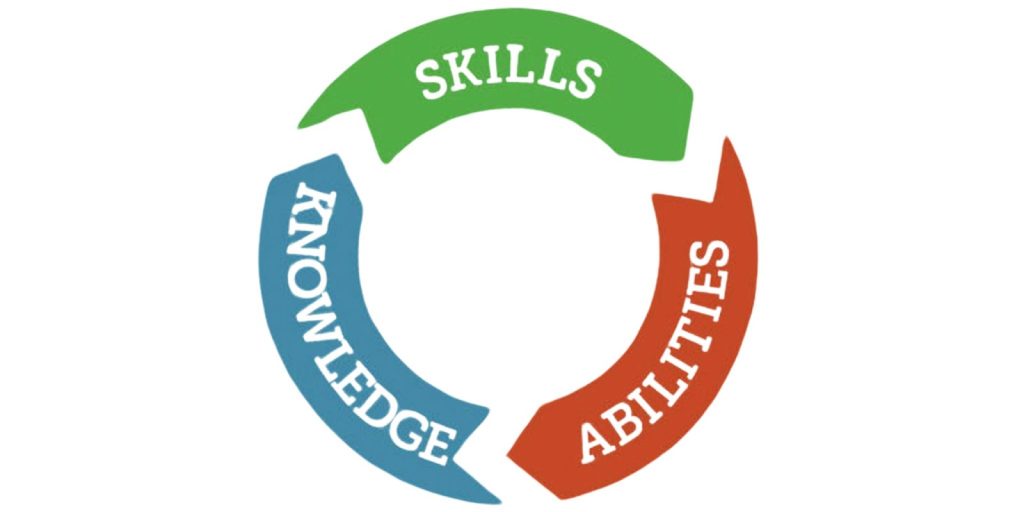Competency-Based Training Framework
Are you wondering about what is a Competency-Based Training Framework? A competency-based training framework focuses on developing specific skills and abilities in people. It ensures workers or students meet required standards by achieving measurable results.
The focus is on performance, not time spent learning. Every participant must demonstrate their ability to perform tasks before moving to the next stage.
This framework identifies the skills needed for success in a role. Training activities and assessments match these skills. The approach is widely used in industries, education, and professional development programs.
Components of a Competency-Based Training Framework

To build a clear and effective framework, organizations focus on certain components. Each component plays a role in delivering strong results.
1. Competency Identification
Competency refers to a specific skill or ability that helps a person complete a task effectively. Competencies are selected based on the needs of a job role, industry standards, or organizational goals.
- Technical Competencies: Skills needed for using equipment, tools, or software. For example, operating a machine or coding in a programming language.
- Behavioral Competencies: Abilities that relate to personal qualities such as communication, leadership, or problem-solving.
- Core Competencies: Basic skills that apply to all roles, such as safety practices, teamwork, or customer service.
Each competency must be measurable and easy to observe. Organizations usually work with trainers or industry experts to identify the correct competencies.
2. Performance Standards
Performance standards describe the level of skill or result a person must achieve. These standards are measurable, specific, and focus on outcomes.
Examples:
- A mechanic must assemble an engine in 45 minutes without errors.
- A sales representative must close at least 20 sales in one month.
Performance standards make it clear what level of work is expected. Trainers and participants both know when the task is completed successfully.
3. Training Methods
Training activities are created to help participants develop the required competencies. The methods are practical and match real tasks people face at work.
Examples of training methods:
- Simulations: People practice tasks in a controlled environment that matches real work situations.
- Role-Playing: Participants act out situations to improve behavioral competencies like teamwork or negotiation.
- Hands-On Practice: Activities involve real tools, machines, or systems to build technical skills.
- Case Studies: Participants solve problems based on actual workplace examples.
The focus is on practical learning, where participants perform tasks instead of reading or listening to theories.
4. Assessment of Competencies
Assessments check whether participants have gained the required skills. A person must demonstrate they can perform a task according to the set performance standard.
Common assessment methods include:
- Skill Demonstrations: Participants show their ability to complete tasks in real conditions.
- Performance Observations: Trainers watch participants perform activities and compare the results to the standard.
- Role-Based Assessments: For behavioral competencies, trainers observe teamwork, leadership, or problem-solving abilities.
Assessments are practical, objective, and fair. Each person is tested based on their performance, not their speed or participation time.
5. Feedback and Improvement
Feedback helps participants improve their skills. Trainers provide clear suggestions to address mistakes or gaps in performance. Feedback is specific and directly related to the task.
Examples of feedback:
- “You completed the task well but missed two safety checks. Focus more on double-checking all steps.”
- “Your solution worked, but it took too much time. Try organizing your steps before starting.”
Participants who do not meet the standard receive additional training, support, or practice time. This ensures everyone achieves the required competency needed.

Pros of a Competency-Based Training Framework
Organizations gain several benefits from using this approach:
- Improves Performance
Employees develop the exact skills needed to perform tasks effectively. - Reduces Errors
Training focuses on measurable results, reducing mistakes on the job. - Saves Time
Participants progress at their own pace. Skilled learners can complete training quickly without waiting for others. - Builds Confidence
Employees know they can perform tasks successfully after completing the program. - Ensures Consistency
Every participant meets the same standards, ensuring reliable results across the organization.
Cons of Competency-Based Training
Some challenges may arise when using a competency-based framework:
- Unclear Competencies: Defining measurable and specific skills can be difficult without expert input.
- Training Costs: Designing practical activities and assessments may require extra time or resources.
- Inconsistent Feedback: Trainers must provide clear and objective feedback during assessments.
Organizations overcome these challenges by involving experienced trainers and managers during the planning stages.
Steps to Build a Competency-Based Training Framework
Organizations follow specific steps to design and implement a competency-based training framework:
Step 1: Identify Training Needs
Start by identifying which skills or competencies are required. Review job roles, company goals, and performance gaps. Managers, trainers, and employees can provide input on where training is needed.
Examples include:
- New technical skills for operating equipment
- Communication skills for improving customer service
- Leadership skills for managing teams effectively
Each competency must be clear, measurable, and directly related to the goals of the program.

Step 2: Define Competency Standards
For each competency, create performance standards. These standards show what participants must achieve to demonstrate success.
Example:
- A warehouse worker must lift and store 50 boxes per hour without damage.
- A software developer must fix coding errors within 24 hours.
Standards ensure training outcomes are measurable and consistent for all participants.
Step 3: Design the Training Program
Create training activities based on real-life tasks. Activities should provide practical experience and focus on achieving the standards.
Training methods may include:
- Workshops with real equipment
- Simulations of workplace scenarios
- One-on-one coaching with supervisors
- Group activities to practice teamwork and leadership
Design activities that match the required competencies and skill levels of participants.
Step 4: Conduct Training Sessions
Start the training program and ensure participants receive the right resources and tools. Trainers guide participants through the activities, offering coaching when needed.
Make sure participants understand the performance standards and objectives before starting activities.
Step 5: Assess Competency Levels
Evaluate participants through practical assessments. Watch how they perform tasks, check the results, and compare them to the set standards.
Use tools like observation checklists, skill demonstrations, or reports to record results.
Example:
- Observe a forklift operator lifting and stacking pallets safely.
- Check whether a customer service agent resolves complaints within the required time.
Participants must meet the standard to show competency. Those who fail receive extra support and reassessment.
Step 6: Monitor Progress and Results
Track the success of the training program over time. Use data to measure improvements in job performance, productivity, and overall efficiency.
Regular monitoring helps identify which parts of the program work well and where changes may be needed.
Wraping It up
A competency-based training framework ensures workers meet specific performance standards by focusing on measurable skills. It includes clear steps such as defining competencies, setting performance standards, designing activities, and assessing results.

![How to Effectively Host Webinars Using OBS Studio [Guide from Expert]](https://learnstream.io/wp-content/uploads/2024/08/image-768x333.png)




